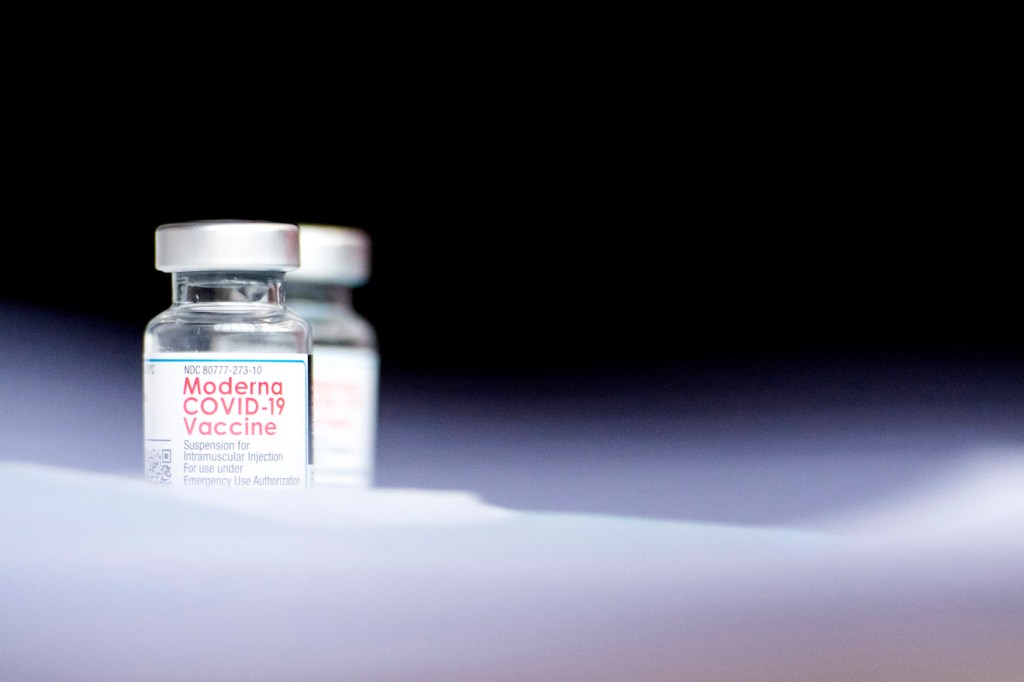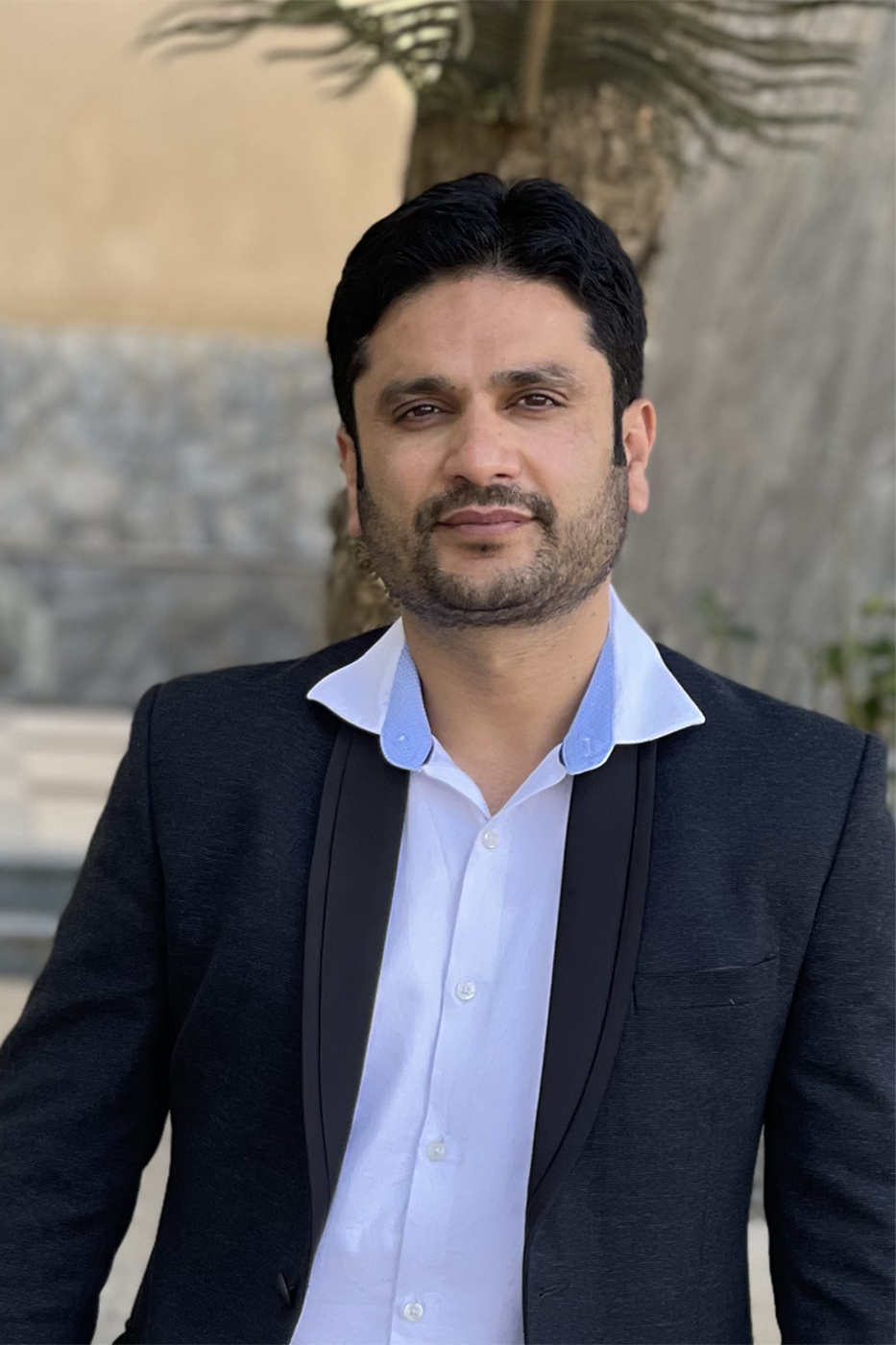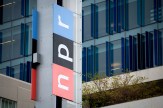Northeastern and Moderna establish fellowship that will bring Big Data to drug development

Northeastern University has teamed up with Moderna, the biotechnology company based in Cambridge, Massachusetts, to create a two-year fellowship for a postdoctoral researcher to get hands-on experience in drug discovery, development, delivery, and evaluation.
Javid Iqbal, an incoming Northeastern postdoctoral researcher selected as the inaugural fellow, will use Big Data to help design a more efficient drug-development model so that scientists can be more confident that treatments, such as the COVID-19 vaccine, will be effective once they reach clinical trials, according to representatives from Northeastern and Moderna.
“Our hope is to design a process that makes it easier, faster, and less expensive to get promising drugs to the clinical trial phase and eventually to the people who need them,” says Mansoor Amiji, university distinguished professor in the departments of pharmaceutical sciences and chemical engineering, who will be supporting the fellowship from Northeastern.

Javid Iqbal, a Northeastern student selected as the inaugural fellow. Courtesy photo.
Husain Attarwala, director and head of clinical pharmacology and pharmacometrics at Moderna, will oversee the fellowship from the company. Attarwala also has a Northeastern connection—he earned his master’s degree from the university in 2011 and his doctoral degree in 2016.
“We need someone with talent and skill to do this work,” Attarwala says. “These are time-intensive models that require brainpower and manpower, and with this fellowship program we can leverage Dr. Amiji’s research experience with real-time drug development at Moderna.”
Iqbal, a clinical pharmacist who will begin the fellowship in July, says that it’s an opportunity to bridge the gap between academia and industry.
“What we do in academia doesn’t always translate to the industry we’re studying,” he says. “Here, I’ll be able to develop clinical models which will assist in developing drugs that are administered at the right dose and the right concentration and that produce the right effect.”
Moderna burst into the public consciousness last year, when it developed one of the few COVID-19 vaccines that has been approved for emergency use by the U.S. Food and Drug Administration. It is also developing a number of pharmaceuticals, including vaccines for influenza and the Zika virus. Attarwala says that Iqbal’s work may include the company’s COVID-19 vaccine but will be focused on refining drug-development procedures in general.
The process by which a drug goes from the lab bench to pharmacy shelves is a long and expensive one, filled with rigorous testing and clinical trials along the way. At each step, scientists refine the dosage and potency to ensure maximal benefit with the least amount of risk.
First, scientists have to decide which disease to affect, and determine which molecule in the body to target in order to do so, Amiji says. Then, they develop a strategy: How can they create a compound that interacts with the targeted molecule in the desired fashion?
If the disease in question is cancer, for example, scientists would determine the difference between a cancer cell and a healthy cell and design a compound that kills only cancer cells.
Scientists will generally try a variety of compounds and test them on a microscopic scale in the lab, Amiji says. Once they find something that works, they head to the FDA for approval to test the drug in humans.
If the FDA approves the drug for clinical trials, scientists put it through a battery of tests. The first phase of clinical trials is to test the drug on young, healthy people to determine the dosage at which the drug is safe, Amiji says.
Phase two is usually a small study of patients who have the disease the drug is designed to affect.
“At that point, you’re looking for some measure of efficacy, but not within a broad, demographically representative population,” Amiji says.
The third phase of clinical trials is where scientists do factor in demographic differences, he says. This phase includes a large population composed of young and old people, people with comorbidities, and pregnant people—some of whom are given the drug and some of whom are given a placebo.
Once all this data has been collected, and the drug tested at a variety of different doses among a variety of different people, the company will deliver the data to the FDA, Amiji says, and scientists there will review it with a fine-toothed comb.
The entire process of bringing an idea to market takes roughly 10 years and costs billions of dollars, Amiji says. He and Attarwala hope that they can harness the power of machine learning and Big Data to decrease both time and cost.
Iqbal’s task will be to reverse-engineer the clinical data to create more accurate preclinical models, Amiji says. If scientists can use better models up front, then maybe they can fine-tune a drug for use before it even gets to clinical trials.
“Once we understand the process, we can create a framework to predict the future in order to develop better, safer, more effective therapies for a wide variety of diseases,” Attarwala says.
For media inquiries, please contact Jessica Hair at j.hair@northeastern.edu or 617-373-5718.





